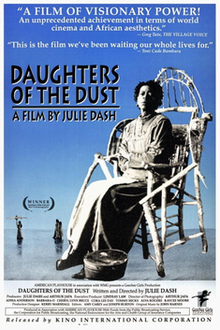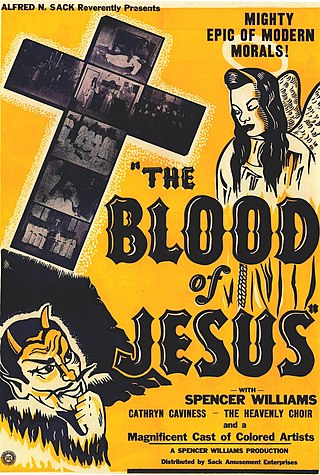
The Blood of Jesus is a 1941 American independent fantasy drama race film written, directed by and starring Spencer Williams. The plot concerns a Baptist woman who, after being accidentally shot by her atheist husband, is sent to a crossroads, where Satan tries to lead her astray.

Julie Ethel Dash is an American filmmaker, music video and commercial director, author, and website producer. Dash received her MFA in 1985 at the UCLA Film School and is one of the graduates and filmmakers known as the L.A. Rebellion. The L.A. Rebellion refers to the first African and African-American students who studied film at UCLA. Through their collective efforts, they sought to put an end to the prejudices of Hollywood by creating experimental and unconventional films. The main goal of these films was to create original Black stories and bring them to the main screens. After Dash had written and directed several shorts, her 1991 feature Daughters of the Dust became the first full-length film directed by an African-American woman to obtain general theatrical release in the United States. In 2004, Daughters of the Dust was named to the National Film Registry by the Library of Congress for its "cultural, historical and aesthetic significance". Stemming from the film's success, Dash also released novels of the same title in 1992 and 1999. The film was later a key inspiration for Beyoncé's 2016 album Lemonade.

The Gullah are a subgroup of the African American ethnic group, who predominantly live in the Lowcountry region of the U.S. states of South Carolina, North Carolina, Georgia, and Florida within the coastal plain and the Sea Islands. Their language and culture have preserved a significant influence of Africanisms as a result of their historical geographic isolation and the community's relation to their shared history and identity.
Vertamae Smart-Grosvenor was an American culinary anthropologist, griot, poet, food writer, and broadcaster on public media. Born into a Gullah family in the Low Country of South Carolina, she moved with them as a child to Philadelphia during the Great Migration. Later she lived in Paris before settling in New York City. She was active in the Black Arts Movement and performed on Broadway.

Celestine Ann "Tina" Beyoncé Knowles-Lawson is an American businesswoman, fashion designer, and philanthropist known for establishing the brands House of Deréon and Miss Tina by Tina Knowles. She is the mother of singers Beyoncé and Solange Knowles, and was married to their father Mathew Knowles until 2011, the manager of Destiny's Child. For her contribution to the fashion business, Knowles was honored at the Accessories Council Excellence Awards in 2001.
Black women filmmakers have made contributions throughout the history of film. According to Nsenga Burton, writer for The Root, "the film industry remains overwhelmingly white and male. In 2020, 74.6 percent of movie directors of theatrical films were white, showing a small decrease from the previous year. In terms of representation, 25.4 percent of film directors were of ethnic minority in 2020. Of the 25.4 percent of minority filmmakers, a small percentage was female.
Barbara Olivia Jones, also known as Barbarao, Barbara-O, and Barbara O., was an American actress from Ohio best known for her work in the films of the L.A. Rebellion movement of 1970s black filmmakers, starring in films by Haile Gerima and Julie Dash. She also appeared on television alongside Muhammad Ali in Freedom Road and had smaller roles in other films including Demon Seed and on television.
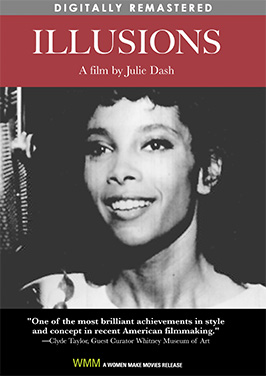
Illusions is a 1982 film written and directed by Julie Dash. The short film depicts the life of an African American woman passing as a white woman working in the film industry during the 1940s. It calls attention to the lack of African Americans in the film industry during that era.

Igbo Landing is a historic site at Dunbar Creek on St. Simons Island, Glynn County, Georgia. It was the setting of a mass suicide in 1803 by captive Igbo people who had taken control of their slave ship and refused to submit to slavery in the United States. The event's moral value as a story of resistance towards slavery has symbolic importance in African American folklore as the flying Africans legend, and in literary history.
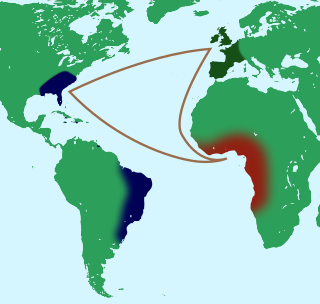
Flying Africans are figures of African diaspora legend who escape enslavement by a magical passage back over the ocean. Most noted in Gullah culture, they also occur in wider African-American folklore, and in that of some Afro-Caribbean peoples.

Vibration Cooking: Or, the Travel Notes of a Geechee Girl is the 1970 debut book by Vertamae Smart-Grosvenor and combines recipes with storytelling. It was published by Doubleday. A second edition was published in 1986, and a third edition was published in 1992. The University of Georgia published another edition in 2011. Smart-Grosvenor went on to publish more cookbooks after Vibration Cooking. Vibration Cooking raised awareness about Gullah culture.

Lemonade is the sixth studio album by American singer-songwriter Beyoncé. It was released on April 23, 2016, by Parkwood Entertainment and Columbia Records, accompanied by a 65-minute film of the same title. It follows her self-titled fifth studio album (2013), and is a concept album with a song cycle that relates Beyoncé's emotional journey after her husband's infidelity in a generational and racial context. Primarily an R&B and art pop album, Lemonade encompasses a variety of genres, including reggae, blues, rock, hip hop, soul, funk, Americana, country, gospel, electronic, and trap. It features guest vocals from Jack White, the Weeknd, James Blake and Kendrick Lamar, and contains samples and interpolations of a number of hip hop and rock songs.

"Sorry" is a song by American singer and songwriter Beyoncé from her sixth studio album, Lemonade (2016). It was written and produced by Beyoncé, Diana Gordon, and MeLo-X, with Hit-Boy serving as a co-producer and Stuart White as an additional producer. Columbia Records serviced the song to radio stations as the album's second single on May 3, 2016. "Sorry" is an electro-R&B song with a thumping rhythm created by drum beats, synthesizers and bells. The song's lyrics revolve around the protagonist dealing with the betrayal of a partner with another woman.
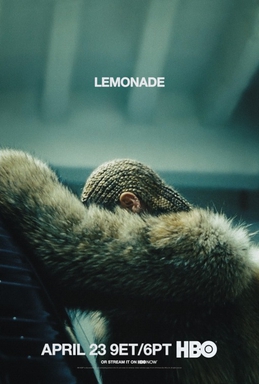
Lemonade is a 2016 musical film and visual album by American singer Beyoncé, and serves as a visual companion to her 2016 album of the same name. Beyoncé also contributes as a director and executive producer for the film. The film was released on April 23, 2016, premiering on HBO, and bundled with the album on CD/DVD, Tidal and iTunes Store, which released on the same day.
Hannah Beachler is an American production designer. The first African-American to win the Academy Award for Best Production Design, she is known for her Afrofuturist design direction of Marvel Studios film series Black Panther and Black Panther: Wakanda Forever. Beachler has been involved in numerous projects directed by Beyoncé, including Lemonade and Black Is King.
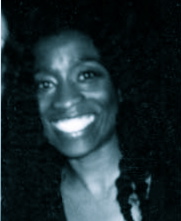
Alva Rogers is an American playwright, composer, actor, vocalist, and arts educator. She is known for the use of dolls and puppetry in interdisciplinary work. Rogers performed in the role of Eula Peazant in Julie Dash's 1991 film Daughters of the Dust. and was a vocalist in the New York City alternative rock band Band of Susans.

Arthur Jafa is an American video artist and cinematographer.
Garrett Bradley is an American filmmaker and director of short films, feature films, documentaries, and television. She is known for blending cinematic genres to explore the larger sociopolitical significance of the everyday moments of her subjects' lived experience.

Ring Shout, or, Hunting Ku Kluxes in the End Times is a dark historical southern gothic fantasy novella written by American fiction writer P. Djèlí Clark. A hardcover of the novella was published by Tor.com Publishing on October 13, 2020. The story follows Maryse Boudreaux on her quest to hunt and destroy the demons summoned by the Ku Klux Klan known as "Ku Kluxes". She is joined by fellow hunters Sadie Watkins and Cordelia Lawrence, as a supernatural evil is rising in an alternate history of 1920s Macon, Georgia.
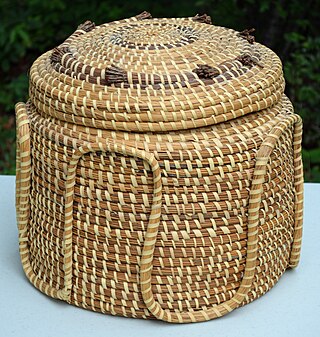
The Gullah are African Americans who live in the Lowcountry region of the U.S. states of Georgia, Florida, South Carolina, and North Carolina, in both the coastal plain and the Sea Islands. They developed a creole language, also called Gullah, and a culture with some African influence.
